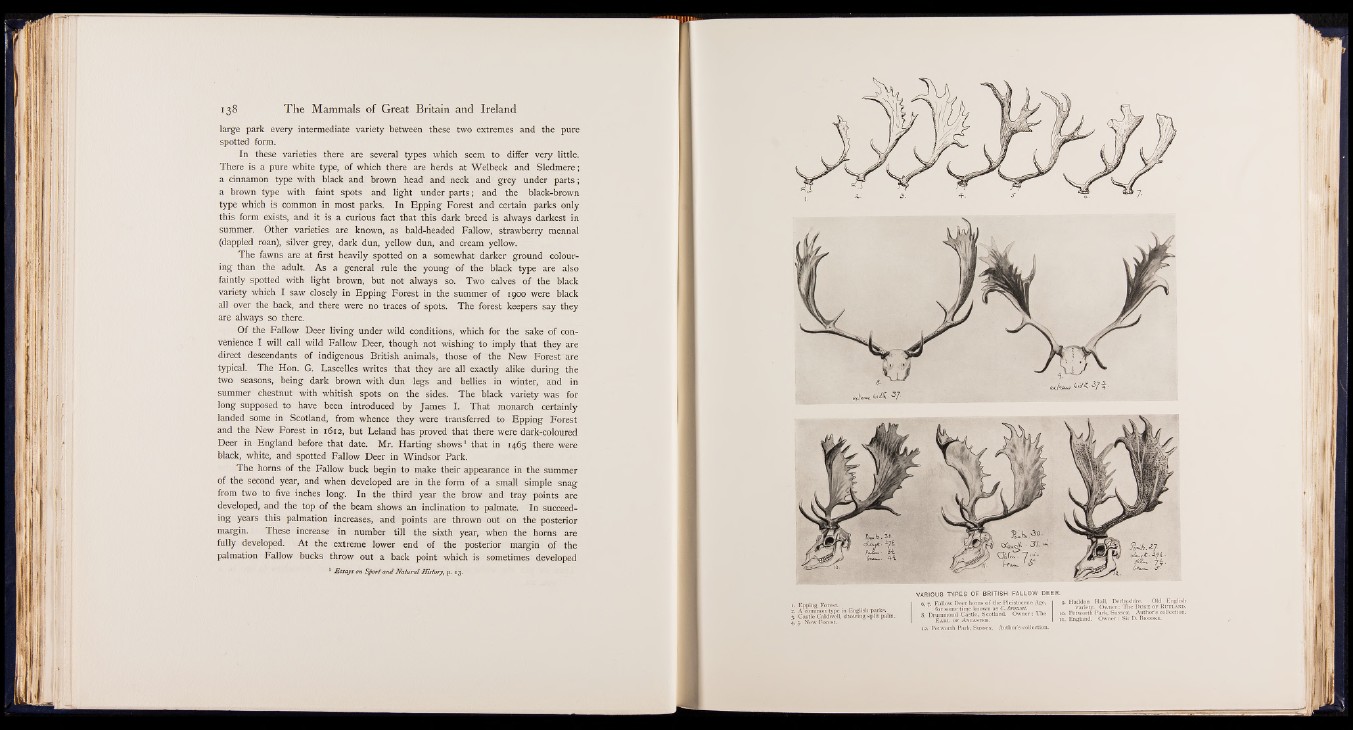
large park every intermediate variety between these two extremes and the pure
spotted form.
In these varieties there are several types which seem to differ very little.
There is a pure white type, of which there are herds at Welbeck and Sledmere;
a cinnamon type with black and brown head and neck and grey under parts;
a brown type with faint spots and light under parts; and the black-brown
type which is common in most parks. In Epping Forest and certain parks only
this form exists, and it is a curious fact that this dark breed is always darkest in
summer. Other varieties are known, as bald-headed Fallow, strawberry mennal
(dappled roan), silver grey, dark dun, yellow dun, and cream yellow.
The fawns are at first heavily spotted on a somewhat darker ground colouring
than the adult. As a general rule the young of the black type are also
faintly spotted with light brown, but not always so. Two calves of the black
variety which I saw closely in Epping Forest in the summer of 1900 were black
all over the back, and there were no traces of spots. The forest keepers say they
are always so there.
Of the Fallow Deer living under wild conditions, which for the sake of convenience
I will call wild Fallow Deer, though not wishing to imply that they are
direct descendants of indigenous British animals, those of ~ the New Forest are
typical. The Hon. G. Lascelles writes that they are all exactly alike during the
two seasons, being dark brown with dun legs and bellies in winter, and in
summer chestnut with whitish spots on the sides. The black variety was for
long supposed to have been introduced by James I. That monarch certainly
landed some in Scotland, from whence they were transferred to Epping Forest
and the New Forest in 1612, but Leland has proved that there were dark-coloured
Deer in England before that date. Mr. Harting shows1 that in 1465 there were
black, white, and spotted Fallow Deer in Windsor Park.
The horns of the Fallow buck begin to make their appearance in the summer
of the second year, and when developed are in the form of a small simple snag
from two to five inches long. In the third year the brow and tray points are
developed, and the top of the beam shows an inclination to palmate. In succeeding
years this palmation increases, and points are thrown out on the posterior
margin. These increase in number till the sixth year, when the horns are
fully developed. At the extreme lower end of the posterior margin of the
palmation Fallow bucks throw out a back point which is sometimes developed
1 Essays on Sport and Natural History, p. 13.
VARIOUS TYPES OF BRITISH FALLOW DEER.
r a Derbyshire. Old English
ier: The Duke of Rutland. ?: ssa BkB H H